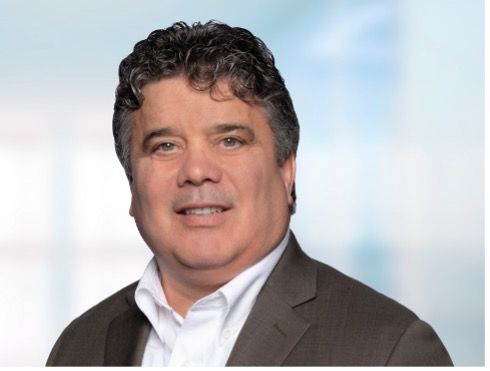- Hypertrophic Cardiomyopathy (HCM)
- Vaccines: 2023 Year in Review
- Eyecare
- Urothelial Carcinoma
- Women's Health
- Hemophilia
- Heart Failure
- Vaccines
- Neonatal Care
- NSCLC
- Type II Inflammation
- Substance Use Disorder
- Gene Therapy
- Lung Cancer
- Spinal Muscular Atrophy
- HIV
- Post-Acute Care
- Liver Disease
- Pulmonary Arterial Hypertension
- Biologics
- Asthma
- Atrial Fibrillation
- Type I Diabetes
- RSV
- COVID-19
- Cardiovascular Diseases
- Breast Cancer
- Prescription Digital Therapeutics
- Reproductive Health
- The Improving Patient Access Podcast
- Blood Cancer
- Ulcerative Colitis
- Respiratory Conditions
- Multiple Sclerosis
- Digital Health
- Population Health
- Sleep Disorders
- Biosimilars
- Plaque Psoriasis
- Leukemia and Lymphoma
- Oncology
- Pediatrics
- Urology
- Obstetrics-Gynecology & Women's Health
- Opioids
- Solid Tumors
- Autoimmune Diseases
- Dermatology
- Diabetes
- Mental Health
Closing the Gap With Virtual Care Services: Reimagining the Delivery of Healthcare
The delivery of care model needs to scale across the community settings while servicing the unique needs of each patient.
COVID-19 forced healthcare systems, large and small, to react and do what was necessary to maximize engagement with their patients. Audio and video only engagement became the norm.According to results of the Medical Economics 2020 Technology Survey, more than 93% of physician survey respondents said they have used telehealth to treat patients this year.” The general finding of this study was:
- Physicians rely on telehealth to keep their practices afloat
- 75% indicated the investment in telehealth is worth it
With the quick onset of the initial COVID surge, health care providers, regardless of size, adopted a variety of different tools to maximize patient engagement. According to the Medical Economics survey, 28% adopted free software (Skype and Facetime, for example) to support patient engagement while only 34% relied on their EHR or hospital system. Overall, a large majority of these adoptions were audio, video — or both — video conferencing applications.
Thomas Foley

But apart from COVID-19 and the public health emergency exclusions, which are due to expire by the end of 2021, there are fundamental shifts occurring that significantly impact healthcare providers and the delivery of care.
Regardless of geography, we have a growing, older (living longer), aging (percent of population over 65 years of age), and sicker (development of more chronic conditions as they age) population. The average Medicare patient with five chronic conditions sees nine different doctors each year and only spends a total of fifteen hours in front of their doctors. The question is, what happens in the other 8,745 hours in that year? Let’s refer to this as a gap in care.
The digital health momentum, in many ways helps but also hurts the delivery of care model. Many don’t have access to technology — computers, smartphones, broadband connectivity — that are often taken for granted.
But shift to virtual care delivery requires more than just an audio or video conferencing setup. Every patient journey is different, each having its unique care plan.
The delivery of care model needs to scale across the community settings while servicing the unique needs of each patient. And patients don’t need to see a provider in person every time they need support.Patients (and providers) need flexibility to pick the best engagement modality based on need. The options range from the asynchronous nature of the virtual front-door to synchronized video engagement, then escalating to high acuity encounters and ultimately to remote patient monitoring services 24/7/365 coupled with chronic care management services and, in 2022, remote therapeutic monitoring.
A feature-rich virtual care platform does not have to be expensive. In fact, the enhanced revenue stream, based on regulatory models associated with virtual care services (telehealth, remote patient monitoring, remote therapeutic monitoring) covers the cost and may even increase your net revenues.
Thomas Foley is the chief growth officer for GenieMD.
Emerging Therapies Committee at UC Davis Hits the Accelerator Not the Brake | AMCP 2024
April 18th 2024After the onboarding of cell and gene therapy bogged using normal pharmacy and therapeutics (P&T) committee procedures, UC Davis Health set up an emerging therapeutics committee to streamline and speed up the process of delivery expensive cell and gene therapies.
Read More
DC Roundtable: Patrick Cooney of The Federal Group Drops the Latest on PBM Legislation in Washington
April 11th 2024In this episode of "DC Roundtable," Peter Wehrwein, managing editor of Managed Healthcare Executive, spoke with Patrick Cooney, president of The Federal Group, a lobbying and strategic planning firm in Washington, D.C., about recent developments in Washington concerning PBMs.
Listen
2024 Emerging Leaders in Healthcare — Submit For a Chance to Be Featured in MHE's August Issue
April 18th 2024MHE Editors are seeking diverse healthcare professionals from different backgrounds and healthcare sectors, with individual interests. Eligible candidates are early or mid-career leaders with less than 10 years of experience. Award winners will enjoy complimentary passes to the PBMI Annual National Meeting in Orlando, Florida, from Sept. 4-6. Additional perks include a feature in our August issue, a subscription to MHE and more!
Read More
